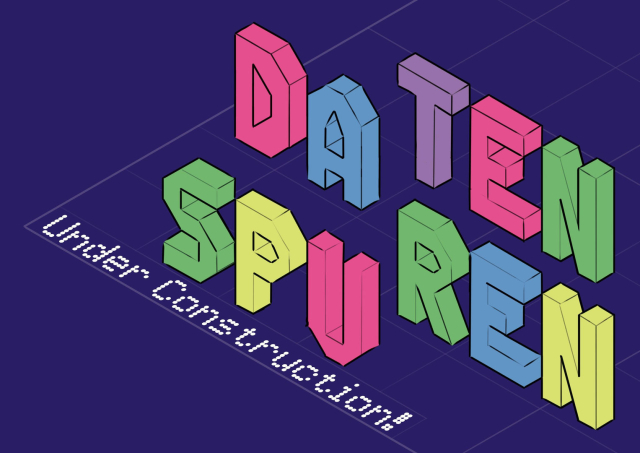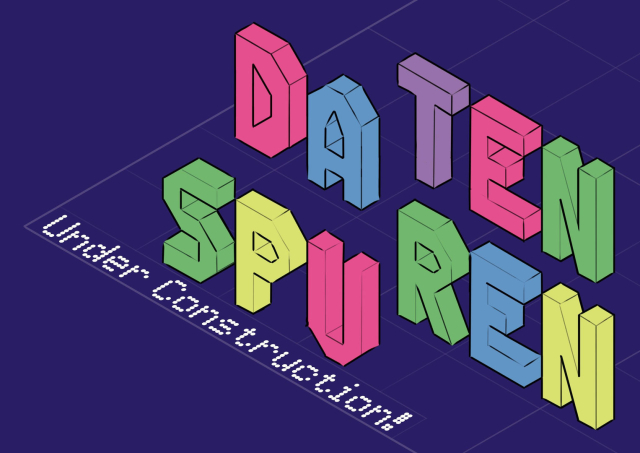It looks like @S1m and I had our #UnifiedPush talk accepted for the FOSS on Mobile devroom at #FOSDEM.
A detailed schedule has yet to be released, but the devroom takes place all day on Saturday.
It looks like @S1m and I had our #UnifiedPush talk accepted for the FOSS on Mobile devroom at #FOSDEM.
A detailed schedule has yet to be released, but the devroom takes place all day on Saturday.
I'm on #GrapheneOS without MicroG or anything Google at all, so I use UnifiedPush to get notifications from #Fedilab, #Element and #ElementX (and something else I've forgotten LOL).
I set up family members with Element using UnifiedPush as, although they have Play Services, I prefer not to give Google (or by extension Trump atm) metadata about who my family talks to and when.
I only wish @nextcloud , @PixelFed , @loops etc. would get on board!
If you're using UnifiedPush to get push notifications because you can't use the Play Services, we'd be happy to ear from you!
It may be because they aren't available in your region, they weren't included in your phone or because your Android version is too old to be supported.

i opened DC today and a message from 5 days ago poped up. As usually. 🤨
my telegram, signal and matrix client has realtime notification via #UnifiedPush
Deltachat is unuseable. Sorry guys.
Fast S2S is less important than fast push to client.
RE: gultsch.social/@daniel/1115289…
I knew pretty early that the EU regulation for IM interoperability is not going the way we want it to go. However the regulator is now looking at push services (FCM, APNS) and I believe we can make some real impact there. We have working solutions and our demands are significantly more actionable.
I don’t know what I was expecting but it looks more and more like the Messaging Interoperability the EU promised will be each gatekeeper essentially publishing their client to server protocol and then you can either use multi protocol messengers or t…Daniel Gultsch (Mastodon)
Are you using Ironfox as PWA to surf Mastodon?
Get push notifications to work with Ironfox on Android (There's no Librewolf for Android) using UnifiedPush.
You would need to download and install Sunup for this to work (no account required)
unifiedpush.org/users/distribu…
Then in Ironfox setting, enable UnifiedPush. Push notifications option will now appear from Mastodon, enable them and voilà.
#Ironfox #Sunup #PWA #UnifiedPush #Android
We created Sunup as a quick and easy way to use UnifiedPush that doesn’t require signing up for an account. This quickstart guide will walk you through the steps to get it up and running on your Android device.UnifiedPush
The last version of our flutter library now properly support Linux applications:
- Push notifications are able to start the application
- Push notifications are automatically decrypted
We hope to see new applications on Linux supporting push notifications with this update.
The list below shows talks that have covered UnifiedPush. We thank these community members who have taken time and energy to spread the word about UnifiedPush! [DE] 2025-09-20, UnifiedPush, Daniel Gultsch at Datenspuren: description, recording, recor…UnifiedPush
Teil 6 der der Nextcloud-Serie!
Push-Benachrichtigungen auf Android via UnifiedPush & NextPush – datenschutzfreundlich über deine Nextcloud statt Google. 👇
kuketz-blog.de/push-benachrich…
#nextcloud #unifiedpush #push #google #android #datenschutz

Push-Benachrichtigungen auf Android via UnifiedPush & NextPush – datenschutzfreundlich über deine Nextcloud statt Google.www.kuketz-blog.de
Push-Benachrichtigungen auf Android-Handys ohne Google. Dezentralisiert und Open Source.
Mit Open Source Tools wie microG bekommt man zwar erfolgreich proprietäre Google Software von seinem Android-Handy verbannt; die eigentlichen Benachrichtigungen werden aber dennoch über Google Server verschickt (Firebase Cloud Messaging).
UnifiedPush ist ein Framework, mit dem Push-Benachrichtigungen dezentral bzw über selbst betriebene Server zugestellt werden können. Zahlreiche Open Source Android Apps unterstützen bereits UnifiedPush. Unter anderem: Tusky, Fedilab, DAVx⁵, Fennec, Element (mit Einschränkungen) und viele mehr.
Dieser Vortrag erklärt, wie Push-Benachrichtigungen im Allgemeinen funktionieren und warum sie trotz ihres eventuell schlechten Rufes eleganter sind, als jede App eine eigene Serververbindung aufbauen zu lassen.
Des Weiteren werden mögliche Privacy-Probleme erörtert die mit der Benutzung von Google Push Servern einhergehen.
Anschließend wird die Architektur von UnifiedPush erklärt.
Der Vortrag endet mit einer praktischen Anleitung wie man UnifiedPush auf einem Android-Handy benutzt.
Einblicke in das #Datenspuren-Programm
Heute: #UnifiedPush
talks.datenspuren.de/ds25/talk…
Push-Benachrichtigungen auf #Android-Handys ohne #Google. Dezentralisiert und #OpenSource. Wie das geht, berichtet @daniel in seinem Vortrag auf den #Datenspuren25.
Wann? 20. September, 16:00–16:45 Uhr
Wo? Henny Brenner Saal und im Stream auf @mediacccde
Ihr wollt euch das komplette Programm ansehen? Dann schaut hier vorbei: talks.datenspuren.de/ds25/sche…

Push-Benachrichtigungen auf Android-Handys ohne Google. Dezentralisiert und Open Source.talks.datenspuren.de
If you can’t make it to #Datenspuren, I will also be at #MRMCD25 talking about #UnifiedPush.
I taught myself how to use mermaid.js. Expect graphs!
talks.mrmcd.net/2025/talk/RLQM…
Push-Benachrichtigungen auf Android-Handys ohne Google. Dezentralisiert und Open Source. Mit Open Source Tools wie microG bekommt man zwar erfolgreich proprietäre Google Software von seinem Android-Handy verbannt; die eigentlichen Benachrichtigungen…talks.mrmcd.net
I’m going to be at the Datenspuren (@datenspuren) conference in Dresden talking about #UnifiedPush. 🇩🇪
UnifiedPush is a topic I’m really passionate about. Every #Android user needs to know about this.
talks.datenspuren.de/ds25/talk…

Push-Benachrichtigungen auf Android-Handys ohne Google. Dezentralisiert und Open Source.talks.datenspuren.de
Even as a non-developer, I found this well written article of great interest. It explained a few things about #UnifiedPush I wasn't aware of, and has given me better insight into how it functions.
It's clear now that there simply isn't any excuse for developers to use #FCM for notifications. I sincerely hope UnifiedPush will gain traction, not only amongst #FOSS developers, but the Android developer community at large.
It's perhaps worth noting that users of #Conversations (and its forks) already have a distributor included in their client, thus further lowering the bar of entry.
Have to use Reddit on a degoogled phone?
You can now get push notifications using Reddit's webapp over @unifiedpush in browsers that support it. (IronFox and soon Fennec)
#Reddit #deGoogle #UnifiedPush
As expected UnifiedPush works with Masotodon (v4.4.0+) web app!
#UnifiedPush #IronFox #Mastodon #Android #PWA
This week in #FDroid (TWIF) has been live since last week, what you've missed:
* More categories and a Client bugfix WiP
* More appid and key changes
* #DAVx5 now with #UnifiedPush support
* #FennecFDroid search engine shenanigans, check your settings now!
* 15 years on #OSMAnd and better navigation
+ 4 new apps
& 131 more updates
Get up to speed: f-droid.org/2025/07/03/twif.ht…

This Week in F-DroidTWIF curated on Thursday, 03 Jul 2025, Week 27F-Droid coreUnattended updates spoiled us all, updates come and go, no need to ever open th...f-droid.org
🤯 🤯
*How secure is UnifiedPush?*
It’s a legitimate question that comes up from time to time. While the question is fairly short, the answer requires a few details. Behind the question of security, it’s also often about privacy.
unifiedpush.org/news/20250513_…
#UnifiedPush #PushNotifications #Android #FCM #Privacy
How secure is UnifiedPush? It’s a legitimate question that comes up from time to time. While the question is fairly short, the answer requires a few details. Behind the question of security, it’s also often about privacy.UnifiedPush
Great news for the wafrn app !!
As a culmination of the big journey of the past weeks, the Wafrn App is now listed in the official @unifiedpush documentation as one of the apps that support UnifiedPush
Check it at unifiedpush.org/users/apps/
#WafrnDev #FediDev #UnifiedPush #Degoogle #FreeServices
This is a non-exhaustive list of the first few end-user applications that use UnifiedPush. Android Name Description Date Since version Docs¹ FluffyChat Matrix chat January 2021 v0.26.UnifiedPush
Since the 24.12 KDE Gear release we are shipping the client-side push notification infrastructure for applications such as NeoChat and Tokodon. For 25.08 thi...volkerkrause.eu
Cool, Fennec is interested in #UnifiedPush support
[1]We will probably have it on Fennec before it gets upstream (if it does 🤞).
That means UnifiedPush will be available for "installable web applications". So we'll have push notifications with some new apps !
[1] gitlab.com/relan/fennecbuild/-…
#FennecBrowser #Firefox #PWA #UnifiedPush

This PR adds a new patch to add UnifiedPush support. To test the feature, you need to install a distributor first...GitLab
TIL #conversations is not just an end to encrypted, federated messenger, it can also send notifications to your apps through #unifiedpush
#xmpp #android #e2ee #decentralised
**Push notifications for decentralized services**
How mobile push notifications currently bring centralization to decentralized services, and how we can avoid it, even for mainstream configurations.
unifiedpush.org/news/20250131_…
#UnifiedPush #Webpush #decentralization
How mobile push notifications currently bring centralization to decentralized services, and how we can avoid it, even for mainstream configurations. Published the 31/01/2025 This post will focus on Android.UnifiedPush
Want to try a new distributor ? Nothing to setup, you just need to open the app and grant the requested permissions. It follows the last version of the UnifiedPush specifications: Sunup !
I tried this but using #NextPush instead of NTFY.
Tapping on #UnifiedPush in the #Dav5X settings instantly picked up UnifiedPush and subscribed, showing my account in brackets. The NextPush Android app showed Davx5 as subscribed.
It seems I had to turn the collection off and on a couple of times before it showed as subscribed, and it still takes about 30 seconds to update. Could that just be #GrapheneOS's default calendar app that I'm using?
Yay, #PolyculeClient now supports #UnifiedPush on Android 🎉 !
gitlab.com/polycule_client/pol…

Signed-off-by: The one with the braid info@braid.businessGitLab
While @suraj_sloth is working on the #UnifiedPush connector side in #Chatty I got a chance to add the code for registering/unregistering #Matrix push gateways in #libcmatrix and Chatty (with this I can readily round trip messages up to the UP distributor):
#phosh #LinuxMobile #adwaita #gtk
Neue Zeile in der Messenger-Matrix ergänzt: »Unterstützte Push-Benachrichtigungsdienste«. Ich habe nicht zu jedem Messenger ausreichend Informationen gefunden, daher wäre es lieb ❤️ , wenn ihr dazu Feedback abgebt. Korrekturen nehme ich gerne vor. 👇
messenger-matrix.de/messenger-…
#push #google #apple #android #ios #fcm #apn #websocket #unifiedpush #ntfy
Gegenüberstellung sicherheits- und datenschutzrelevanter Eigenschaften von Messengernwww.messenger-matrix.de
Teste seit heute die #UnifiedPush Version von #Molly (Signal Fork). Benachrichtigung über neue Nachrichten erfolgt via #ntfy. Bereits nach einem Tag Test lässt sich sagen: Akku-Verbrauch ist geringer als mit #WebSocket bei Signal.
github.com/mollyim/mollyim-and…

Molly with UnifiedPush support. Contribute to mollyim/mollyim-android-unifiedpush development by creating an account on GitHub.GitHub
Hell, yes. This is nothing but good news. 
I've been using Unified Push + Element + Fedilab via Nextcloud and NextPush and it's been remarkably simple and reliable while keeping all that sweet, sweet metadata out of the Goog's hungry clutches. Thank you!
Can't wait for Yunohost to support sliding sync so I can shift to ElementX.
#UnifiedPush #Privacy #FOSS #Element #ElementX #Yunohost #Fedilab #Nextcloud #NextPush #Google #Android
Guten Morgen. Wer sie noch nicht kennt, sollte unbedingt einen Blick in die Empfehlungsecke werfen. Diese enthält meine aktuellen Empfehlungen zu verschiedenen Themen wie Messenger, Werbeblocker, werbefreies YouTube, Passwort-Manager, Suchmaschinen und Co. 👇
kuketz-blog.de/empfehlungsecke…
#empfehlung #tracking #security #datenschutz #adblocker #android #youtube #messenger #linux #firefox #dns #unifiedpush #email #frankgehtran #thunderbird #passwortmanager #videokonferenz #vpn #suchmaschine

Die Empfehlungsecke beinhaltet aktuelle Empfehlungen zu Messengern, Browser-Add-ons und weiteren Themen • IT-Sicherheit aus KarlsruheKuketz IT-Security Blog
Version 0.4.0 (Codename „All Engines Running“) of Ltt.rs not only brings support for #UnifiedPush but also a UI refresh. The e-mail client for Android now supports Material U / dynamic colors.
#autocrypt #opensource #email #Lttrs
Note that Ltt.rs requires an e-mail server that supports #JMAP. (There aren’t many providers that support it so Ltt.rs is currently more for the adventurous / self hosting type user.)
No-frills, easy to use, easy to maintain Email client for Android based on the JSON Meta Application Protocol (JMAP).Codeberg.org

Linux UnifiedPush Distributor using ntfy.sh (self-hosted or official)GitLab
Hey ! We're pleased to announce that Ltt.rs [1], an email (JMAP) client, and Mercurygram [2], a new fork of #Telegram, now support #UnifiedPush. And support is being upstreamed to Telegram-FOSS :)
[1] ltt.rs from @daniel
[2] github.com/drizzt/Mercurygram/ from @timothy

Unofficial, FOSS-friendly fork of the original Telegram client for Android - GitHub - drizzt/Mercurygram: Unofficial, FOSS-friendly fork of the original Telegram client for AndroidGitHub